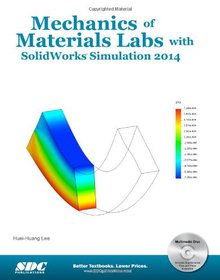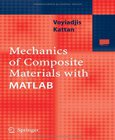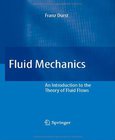Mechanics of Materials Labs
With SolidWorks Simulation 2014

Book Details:
| Publisher: | SDC Publications |
| Series: | MIX |
| Author: | Huei-Huang Lee |
| Edition: | 1 |
| ISBN-10: | 1585038954 |
| ISBN-13: | 9781585038954 |
| Pages: | 283 |
| Published: | Jan 30 2014 |
| Posted: | Feb 16 2015 |
| Language: | English |
| Book format: | |
| Book size: | 62.32 MB |
Book Description:
This book is designed as a software-based lab book to complement a standard textbook in a mechanics of material course, which is usually taught at the undergraduate level. This book can also be used as an auxiliary workbook in a CAE or Finite Element Analysis course for undergraduate students. Each book comes with a disc containing video demonstrations, a quick introduction to SolidWorks, and all the part files used in the book. This textbook has been carefully developed with the understanding that CAE software has developed to a point that it can be used as a tool to aid students in learning engineering ideas, concepts and even formulas. These concepts are demonstrated in each section of this book. Using the graphics-based tools of SolidWorks Simulation can help reduce the dependency on mathematics to teach these concepts substantially. The contents of this book have been written to match the contents of most mechanics of materials textbooks. There are 14 chapters in this book. Each chapter is designed as one week s workload, consisting of 2 to 3 sections. Each section is designed for a student to follow the exact steps in that section and learn a concept or topic of mechanics of materials. Typically, each section takes 15-40 minutes to complete the exercises. Each copy of this book comes with a disc containing videos that demonstrate the steps used in each section of the book, a 123 page introduction to Part and Assembly Modeling with SolidWorks in PDF format, and all the files readers may need if they have any trouble. The concise introduction to SolidWorks pdf is designed for those students who have no experience with SolidWorks and want to feel more comfortable working on the exercises in this book. All of the same content is available for download on the book s companion website. Table of Contents 1. Stresses 2. Displacements 3. Strains 4. Stress-Strain Relations 5. Axial Loading 6. Torsion 7. Bending 8. Shear Stresses in Beams 9. Strain Energy 10. Failure Criteria 11. Trusses and Beams 12. Plane Problems 13. Plates and Shells 14. Buckling
Download Link:
Related Books:
Mechanics of Materials
9th Edition
For undergraduate Mechanics of Materials courses in Mechanical, Civil, and Aerospace Engineering departments. Containing Hibbeler's hallmark student-oriented features, this text is in four-color with a photorealistic art program designed to help students visualize difficult concepts. A clear, concise writing style and more examples than any other text further contribute to students' ability to master the material. This edition is available with MasteringEngineering, an innovative online program created to emulate the instructor's officehour environment, guiding students through engineering concepts from Mechanics of Materials with self-paced indi...
Mechanics of Composite Materials with MATLAB
This textbook makes use of the popular computer program MATLAB as the major computer tool to study mechanics of composite materials. It is written specifically for students in engineering and materials science, examining step-by-step solutions of composite material mechanics problems using MATLAB. Each of the 12 chapters is well structured and includes a summary of the basic equations, MATLAB functions used in the chapter, solved examples and problems for students to solve. The main emphasis of Mechanics of Composite Materials with MATLAB is on learning the composite material mechanics computations and on understanding the underlying concepts. The solutions to most of the given problems appear in an appendix at the end of the book....
Fluid Mechanics
An Introduction to the Theory of Fluid Flows
Fluid mechanics embraces engineering, science, and medicine. This books logical organization begins with an introductory chapter summarizing the history of fluid mechanics and then moves on to the essential mathematics and physics needed to understand and work in fluid mechanics. Analytical treatments are based on the Navier-Stokes equations. The book also fully addresses the numerical and experimental methods applied to flows. This text is specifically written to meet the needs of students in engineering and science. Overall, readers get a sound introduction to fluid mechanics....
2007 - 2021 © eBooks-IT.org



